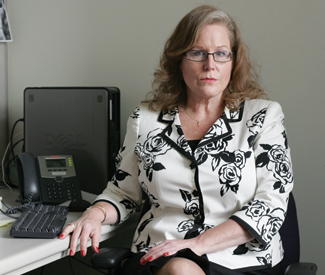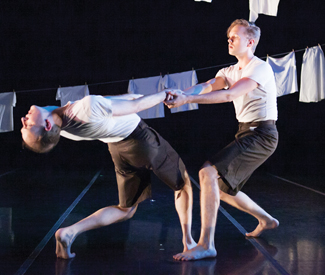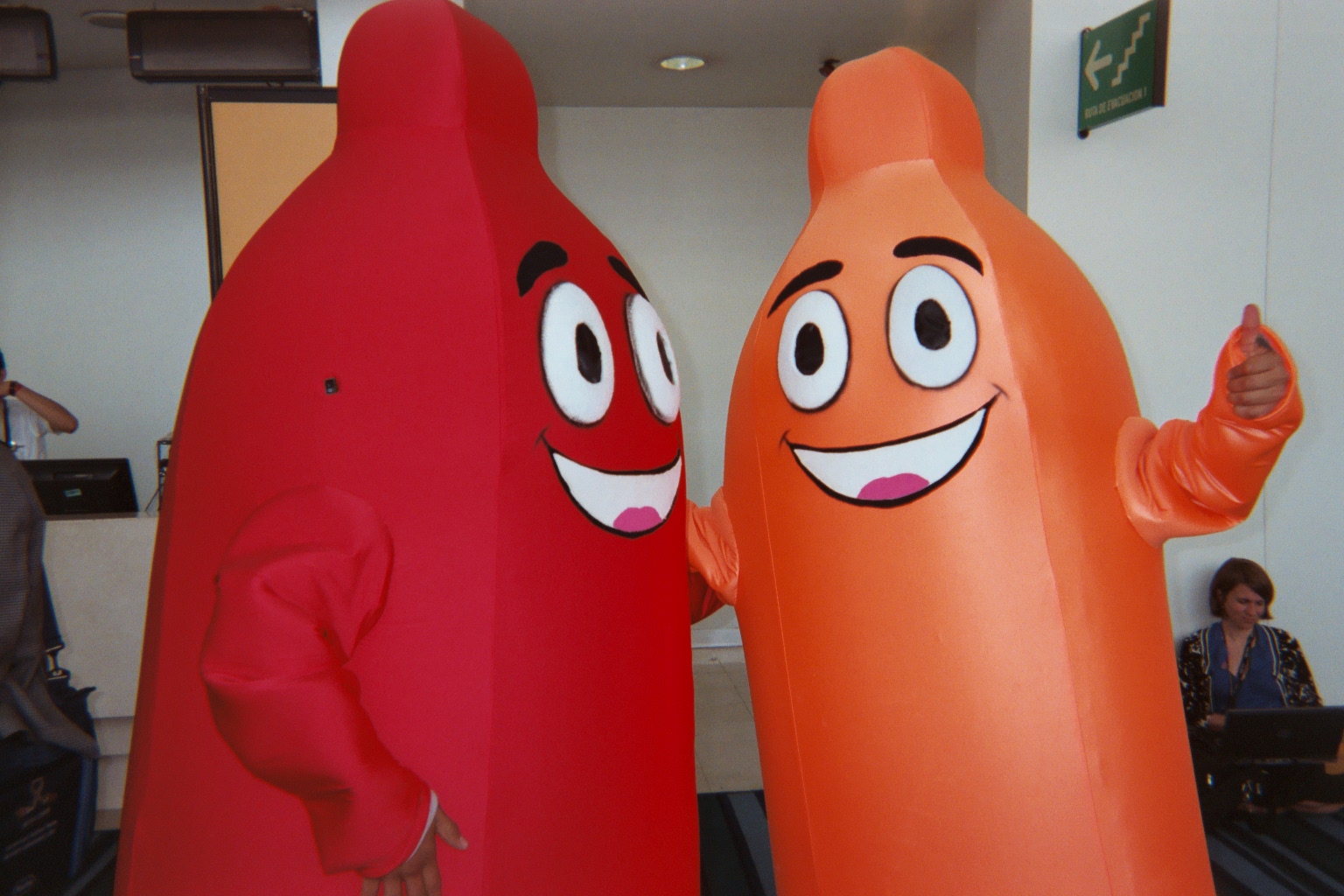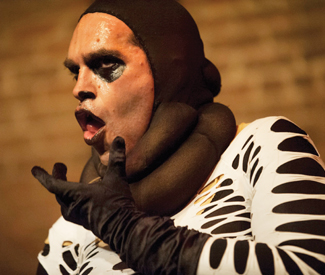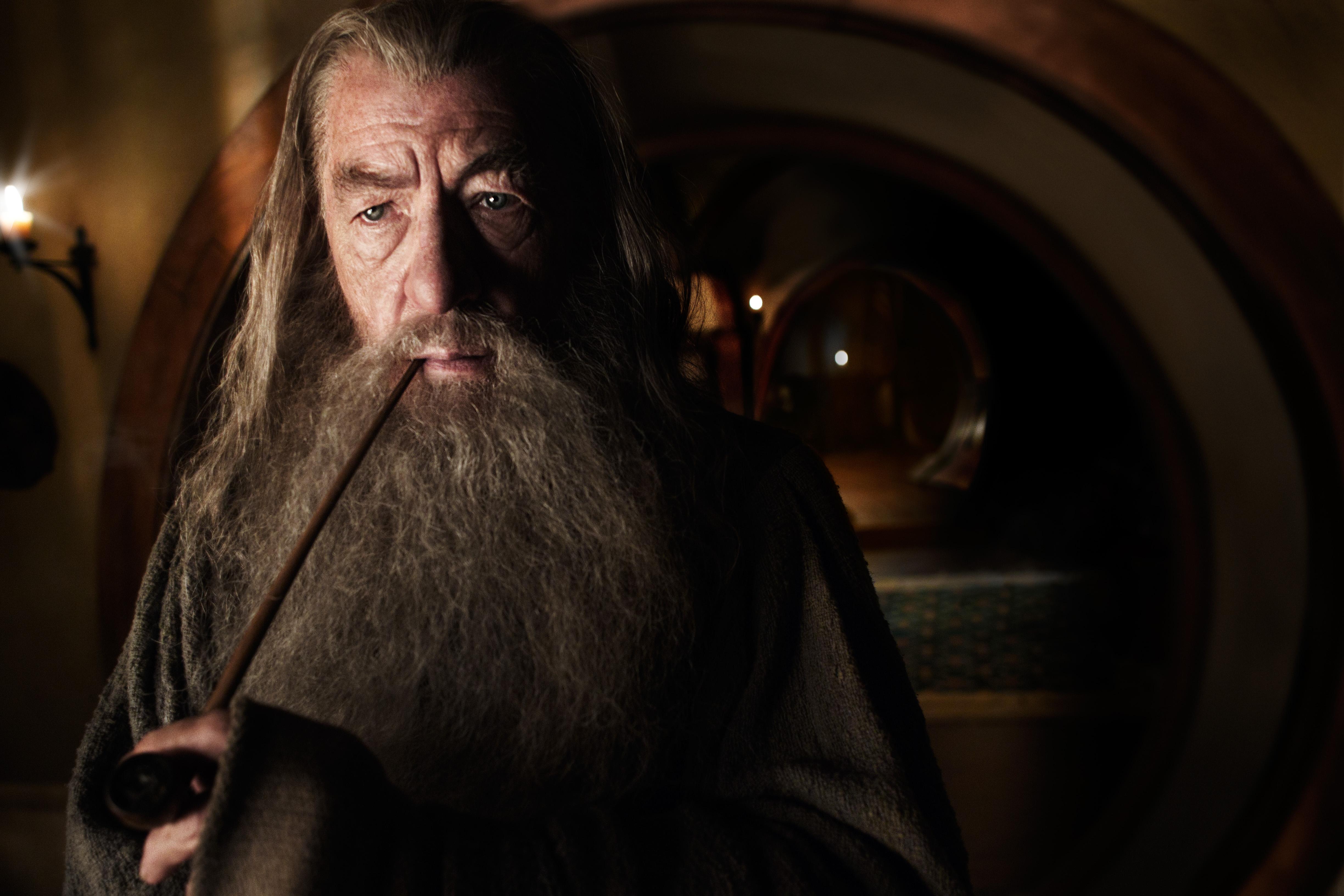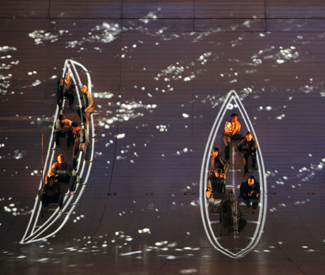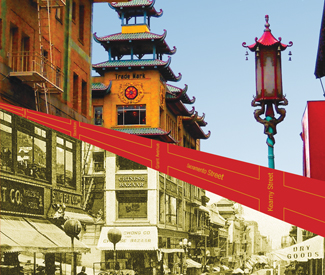Stage listings are compiled by Guardian staff. Performance times may change; call venues to confirm. Reviewers are Robert Avila, Rita Felciano, and Nicole Gluckstern. Submit items for the listings at listings@sfbg.com.
THEATER
OPENING
Talk Radio Actors Theatre of San Francisco, 855 Bush, SF; www.actorstheatresf.org. $26-38. Opens Fri/26, 8pm. Runs Wed-Sat, 8pm. Through June 15. Actors Theatre of San Francisco performs Eric Bogosian’s breakthrough 1987 drama.
BAY AREA
The Dead Girl Avant Garde, 1328 Fourth St, San Rafael; www.altertheater.org. $25. Previews Wed/24, 7:30pm, and Fri/26, 8pm. Opens Sat/27, 8pm. Runs Wed, 7:30pm; Fri-Sat, 8pm; Sun, 3pm. Through May 19. AlterTheater performs 90-year-old playwright Ann Brebner’s new family drama.
ONGOING
Acid Test: The Many Incarnations of Ram Dass Marsh San Francisco, 1062 Valencia, SF; www.themarsh.org. $15-50. Fri, 8pm; Sat, 5pm (May 11, show at 8pm). Through May 18. Playwright Lynne Kaufman invites you to take a trip with Richard Alpert, a.k.a. Ram Dass (Warren David Keith), as he recounts times high and low in this thoughtful, funny, and sometimes unexpected biographical rumination on the quest for truth and meaning in a seemingly random life by one of the big wigs of the psychedelic revolution and (with his classic book, Be Here Now) contemporary Eastern-looking spirituality. Directed by Joel Mullennix, the narrative begins with Ram Dass today, in his Hawaiian home and partly paralyzed from a stroke, but Keith (one of the Bay Area’s best stage actors, who is predictably sure and engagingly multilayered in the role) soon shakes off the stiff arm and strained speech and springs to his feet to continue the narrative as the ideal self perhaps only transcendental consciousness and theater allow. Nevertheless, Kaufman’s fun-loving and extroverted Alpert is no saint and no model of perfection, which is the refreshing truth explored in the play, but rather a seeker still, ever imperfect and ever trying for greater perfection or at least the wisdom of acceptance. As the privileged queer child of a wealthy Jewish lawyer and industrialist, Alpert was both insider and outsider from the get-go, and that tension and ambiguity makes for an interesting angle on his life as well as the complexities of his relationships with a homophobic Leary, for instance, and his conservative but ultimately loving father. Perfection aside, the beauty in the subject and the play is the subtle, shrewd cherishing of what remains unfinished. (Avila)
The Bereaved Thick House, 1695 18th St, SF; www.crowdedfire.org. $10-35. Wed/24-Sat/27, 8pm. Crowded Fire Theater launches its Mainstage season with Thomas Bradshaw’s wicked comedy about “sex, drugs, and the American dream.”
Boomeraging: From LSD to OMG Marsh San Francisco, 1062 Valencia, SF; www.themarsh.org. $15-50. Tue, 8pm. Through May 28. Comedian Will Durst performs his brand-new solo show.
The Bus New Conservatory Theatre Center, 25 Van Ness, SF; www.nctcsf.org. $32-45. Wed/24-Sat/27, 8pm; Sun/28, 2pm. NCTC performs James Lantz’s tale of two young men whose meeting place for their secret relationship is a church bus.
The Expulsion of Malcolm X Southside Theatre, Fort Mason Center, Marina at Laguna, SF; www.fortmason.org. $30-42.50. Fri-Sat, 8pm; Sun, 3pm. Through May 5. Colors of Vision Entertainment and GO Productions present Larry Americ Allen’s drama about the relationship between Malcolm X and Elijah Muhammad.
Foodies! The Musical Shelton Theater, 533 Sutter, SF; www.foodiesthemusical.com. $30-34. Fri-Sat, 8pm. Open-ended. AWAT Productions presents Morris Bobrow’s musical comedy revue all about food.
Ghostbusters: Live On Stage Dark Room Theater, 2263 Mission, SF; www.darkroomsf.com. $20. Thu/25-Sat/27, 8pm. Rhiannastan Productions brings the beloved 1984 comedy to the stage.
How To Make Your Bitterness Work For You Stage Werx Theatre, 446 Valencia, SF; www.bitternesstobetterness.com. $15-25. Sun, 2pm. Through May 5. Fred Raker performs his comedy about the self-help industry.
I’m Not OK, Cupid 🙁 Shelton Theatre, 533 Sutter, SF; www.leftcoasttheatreco.org. $15-35. Thu-Sat, 8pm. Through May 4. Left Coast Theatre Co., a new company formed in 2012 from the gay men’s writing group GuyWriters Playwrights, offers this rocky but sometimes clever evening of seven short gay comedies about love, relationships, getting it on, getting it off, and so forth. The evening begins with Andrew Black’s A Small Fishing Village Wedged Between Estonia and Latvia, set in the Castro, where a gay couple (Chris Maltby and Dene Larson) try to foil a mixed couple of would-be robbers (Laura Espino and Richard Sargent) by injecting some homoerotic tension between their otherwise heterosexual vibe. Directed by ShawnJ West, it’s drolly if inconsistently acted, but never very funny, and followed by three more non-starters: James A. Martin’s Lollipops, Rodney “Rhoda” Taylor’s Goodbye, Cupid, and Black’s verse-bound Arlecchino’s Last Prank. The second half of the bill proves more satisfying overall — Rich Orloff’s Chekhov-inspired That Bitch, directed by Joseph Frank and featuring the able trio of Hayley Saccomano, Laura Espino, and Danielle O’Dea; Joseph Frank’s wacky The Parenthetical Trap, directed by Frank and Saccomano, wherein sibling rivalry (i.e., the amusingly puerile duo of Kyle Glasow and Dawson Montoya) meets dysfunctional family (rounded out by Gabrielle Motarjemi and Frank) reunited in musical harmony; and Alex Dremann’s randy and well-acted Four Dry Tongues, directed by ShawnJ West, in which friends Ginny (Angela Chandra) and Tristan (Michael Erickson) compete for the affection of guest Matt (Robert Rushin) by flirting with his gorgeously haughty lesbian friend Laura (Danielle O’Dea). (Avila)
The Lost Folio: Shakespeare’s Musicals Un-Scripted Theater, 533 Sutter, Second Flr, SF; www.un-scripted.com. $10-20. Thu-Sat, 8pm. Through May 18. Un-Scripted Theater Company performs a fully-improvised, full-length musical inspired by Shakespeare.
The Lullaby Tree Phoenix Theater, 414 Mason, SF; www.secondwind.8m.com. $15-35. Thu-Sat, 8pm; Sun, 2pm. Through May 4. In the face of the ever more extensive and controversial spread of GMO foods worldwide — not to mention last year’s state battle over Prop 37 — Second Wind premieres founding member and playwright Ian Walker’s half-whimsical, half-hardheaded drama about a boy searching for his mother in the underworld and a small band of lawyers and environmentalists going toe-to-toe with a multinational over the ownership of a mysterious crop of genetically engineered corn. It will eventually become plain that the two stories are linked, but first a ten-year-old boy (Samuel Berston) befriends a somewhat shrunken giant (Davern Wright) in an attempt to find his mother (Evangeline Crittenden) in an enchanted and hostile land of dragons. Elsewhere, Tim (Walker) and law partner Nod (Wright) prepare to do legal battle with a modern-day dragon, in the person of a corporate attorney (Cheryl Smith) for the ominous Mendes Corporation (read: Monsanto). They will argue over the ownership of the corn that has sprung up on the banks of a drowned town, and which may spell environmental disaster for the nature preserve surrounding it. In this fight Tim and Nod are in uneasy, ultimately disastrous alliance with activist Callie (Crittenden), whom Nod distrusts and with whom Tim is hopelessly smitten. The result is a convoluted plot and a fitful production (co-directed by Walker and Misha Hawk-Wyatt) in which a three-pronged story precariously balances the fairy tale, the romance, and the legal battle. It’s the last prong that offers the more interesting if formulaic scenes, in which the politics of GMOs mesh with the swashbuckling machinations of the attorneys. But the less compelling strands converge and take precedence, forcing things down a sentimental and forgettable road. (Avila)
reasons to be pretty San Francisco Playhouse, 450 Post, Second Flr, SF; www.sfplayhouse.org. $30-100. Tue-Thu, 7pm; Fri-Sat, 8pm (also Sat, 3pm). Through May 11. Completing a trilogy of plays about body awareness and self-image (along with The Shape of Things and Fat Pig), Neil LaBute’s reasons to be pretty begins with a misconstrued remark that quickly gathers enough weight and momentum to tear three sets of relationships apart in the span of a two-hour play. The SF Playhouse production begins with a bang, or rather an awesomely knock-down, blow-out breakup fight between a righteously pissed-off Steph (Lauren English) and her awkwardly passive boyfriend Greg (Craig Marker), who has inadvertently referred to her as “regular” in a conversation with his jerkish buddy Kent (Patrick Russell), which she takes to mean he finds her ugly. English’s Steph is at turns ferocious and fragile, and her comic timing as she eviscerates Greg’s looks in a mall food court zings, while the hyperkinetic Russell elevates the condition of noxiously irredeemable douchebag to an art form. But terrific acting and polished design can only make up so much for a script that feels not only flawed, barely scratching the surface of the whys and wherefores each character has internalized an unrealistic view of the importance of conventional beauty standards, but also already dated, with its circa-2008 pop culture references. Ultimately it gives the impression of being a rerun of a Lifetime television drama that wraps itself up into a too-neat package just in time for the final credits to roll to its admittedly kickass soundtrack (provided by Billie Cox). (Gluckstern)
Sam I Am: A Processional of Short Plays and Prose About Samuel Beckett Bindlestiff Studio, 185 Sixth St, SF; www.pustheatre.com. $10-20. Fri-Sat, 8pm; Sun, 2pm. Through May 11. Performers Under Stress remounts and revamps its series of short plays and pieces by Samuel Beckett, this time staging it throughout the basement quarters of Bindlestiff Studio, where audiences are led around an economical maze of performance spaces. Opening weekend consisted of too much text and too little in way of staging ideas, especially with several spoken selections of Beckett prose (which have reportedly since been dropped from the program). The best of what remains (in a program of six short plays total) includes Valerie Fachman’s respectable performance as the disembodied “mouth” of the brilliant Not I; and James Udom and Geo Epsilany’s duet in Rough for Theatre I, in which a wheelchair-bound food-hoarder (a softly eccentric Epsilany) strikes up a doomed friendship with a blind beggar (a solid Udom) amid a colorless and barren landscape. The bucket of Beckett dreary gets less satisfying from there, though director Scott Baker’s wordless performance as the titular Joe in Eh Joe proves poised and the doubled voices in his head (by Melissa Clason and Allison Hunter Blackwell) both haunting and intriguing. (Avila)
Sex and the City: LIVE! Rebel, 1760 Market, SF; trannyshack.com/sexandthecity. $25. Wed, 7 and 9pm. Open-ended. It seems a no-brainer. Not just the HBO series itself — that’s definitely missing some gray matter — but putting it onstage as a drag show. Mais naturellement! Why was Sex and the City not conceived of as a drag show in the first place? Making the sordid not exactly palatable but somehow, I don’t know, friendlier (and the canned a little cannier), Velvet Rage Productions mounts two verbatim episodes from the widely adored cable show, with Trannyshack’s Heklina in a smashing portrayal of SJP’s Carrie; D’Arcy Drollinger stealing much of the show as ever-randy Samantha (already more or less a gay man trapped in a woman’s body); Lady Bear as an endearingly out-to-lunch Miranda; and ever assured, quick-witted Trixxie Carr as pent-up Charlotte. There’s also a solid and enjoyable supporting cast courtesy of Cookie Dough, Jordan Wheeler, and Leigh Crow (as Mr. Big). That’s some heavyweight talent trodding the straining boards of bar Rebel’s tiny stage. The show’s still two-dimensional, even in 3D, but noticeably bigger than your 50″ plasma flat panel. (Avila)
Sheherezade 13 Exit Theatre, 156 Eddy, SF; www.wilywestproductions.com. $25. Thu/25-Sat/27, 8pm. Wily West Productions presents a short play showcase.
Show Me Yours: Songs of Innocence and Experience Alcove Theater, 414 Mason, Ste 502, SF; www.thealcovetheater.com. $27. Thu/25-Sat/27, 8pm. New Musical Theater of San Francisco performs a new musical revue written by Pen and Piano, the company’s resident group of writers and composers.
Steve Seabrook: Better Than You Marsh San Francisco, 1062 Valencia, SF; www.themarsh.org. $15-50. Thu, 8pm; Sat, 8:30pm. Extended through May 18. Self-awareness, self-actualization, self-aggrandizement — for these things we turn to the professionals: the self-empowerment coaches, the self-help authors and motivational speakers. What’s the good of having a “self” unless someone shows you how to use it? Writer-performer Kurt Bodden’s Steve Seabrook wants to sell you on a better you, but his “Better Than You” weekend seminar (and tie-in book series, assorted CDs, and other paraphernalia) belies a certain divided loyalty in its own self-flattering title. The bitter fruit of the personal growth industry may sound overly ripe for the picking, but Bodden’s deftly executed “seminar” and its behind-the-scenes reveals, directed by Mark Kenward, explore the terrain with panache, cool wit, and shrewd characterization. As both writer and performer, Bodden keeps his Steve Seabrook just this side of overly sensational or maudlin, a believable figure, finally, whose all-too-ordinary life ends up something of a modest model of its own. (Avila)
Stuck Elevator American Conservatory Theater, 415 Geary, SF; www.act-sf.org. $20-85. Wed/24-Sat/27, 8pm (also Wed/24 and Sat/27, 2pm); Sun/28, 7pm. As federal immigration reform captures the national spotlight, ACT premieres a dynamic and entertaining new musical by Byron Au Yong (score) and Aaron Jafferis (libretto) that privileges the real-life experience of an undocumented Chinese deliveryman Ming Kuang Chen, trapped for 81 hours in a Bronx elevator in 2005. Slickly directed by Chay Yew, the memories, fears, and fantasies of Guang (a sympathetic and mellifluous Julius Ahn) become the stuff of chamber opera, wherein the chamber is a malfunctioning elevator car in a dilapidated high-rise housing complex. Initially too afraid to call for help (lest his immigration status be discovered), Guang suffers at the thought of the precious dollars he is losing with each hour spent away from work, and distracts himself with thoughts of his wife (Marie-France Arcilla) and son (Raymond J. Lee) back home in China, his mean employer (Joseph Anthony Foronda in comical drag), and his Mexican friend and coworker (Joel Perez). With the undocumented immigrant’s precarious situation become a literal cell, Daniel Ostling’s impressively kinetic, expansive scenic design pivots between grimy naturalism and a multimedia canvas for the protagonist’s unbounded thoughts and imagination. Fantastical routines ensue, sometimes wistful and romantic, sometimes comical and outlandish, throughout a story and score that prove consistently engaging but also somewhat lacking in real suspense. The impressive cast is also a highlight here, and the 80 minutes go by pleasantly enough, even if the larger complexity of the subject — the social, racial, and class dynamics that produce the protagonist’s surreal situation — is itself somewhat confined by the genre of the romantic immigrant narrative. (Avila)
Tinsel Tarts in a Hot Coma: The Next Cockettes Musical Hypnodrome, 575 10th St, SF; www.thrillpeddlers.com. $30-35. Thu-Sat, 8pm. Through June 1. Thrillpeddlers and director Russell Blackwood continue their Theatre of the Ridiculous series with this 1971 musical from San Francisco’s famed glitter-bearded acid queens, the Cockettes, revamped with a slew of new musical material by original member Scrumbly Koldewyn, and a freshly re-minted book co-written by Koldewyn and “Sweet Pam” Tent — both of whom join the large rotating cast of Thrillpeddler favorites alongside a third original Cockette, Rumi Missabu (playing diner waitress Brenda Breakfast like a deliciously unhinged scramble of Lucille Ball and Bette Davis). This is Thrillpeddlers’ third Cockettes revival, a winning streak that started with Pearls Over Shanghai. While not quite as frisky or imaginative as the production of Pearls, it easily charms with its fine songs, nifty routines, exquisite costumes, steady flashes of wit, less consistent flashes of flesh, and de rigueur irreverence. The plot may not be very easy to follow, but then, except perhaps for the bubbly accounting of the notorious New York flop of the same show 42 years ago by Tent (as poisoned-pen gossip columnist Vedda Viper), it hardly matters. (Avila)
The World’s Funniest Bubble Show Marsh San Francisco, 1062 Valencia, SF; www.themarsh.org. $8-50. Sun, 11am. Through July 21. Louis “The Amazing Bubble Man” Pearl returns after a month-long hiatus with his popular, kid-friendly bubble show.
BAY AREA
The Arsonists Aurora Theatre, 2081 Addison, Berk; www.auroratheatre.org. $35-60. Tue and Sun, 7pm (also Sun, 2pm); Wed-Sat, 8pm. Through May 12. There’s a lot of humor to be found in Alistair Beaton’s crackling translation of Max Frisch’s The Arsonists, playing now at the Aurora Theatre, but much of the laughter it elicits is of the nervous variety, as the play’s mostly protagonist, the effete, bourgeois Herr Biedermann (Dan Hiatt) inadvertently signs off on his own destruction when he invites an uncouth arsonist to come and stay in his attic (Michael Ray Wisely). “If we assume everyone is an arsonist, where does that get us?” becomes his standard deflection, as one arsonist becomes two (adding in the unctuous, nihilistic Tim Kniffin), and the empty attic a repository for giant drums of gasoline, a detonator, and fuse wire — arousing the suspicions of a chorus of firefighters (Kevin Clarke, Tristan Cunningham, Michael Uy Kelly), who act as the conscience and guardians of the township. Although on the surface the scenario is patently absurd, the message that passivity in the face of evil is like helping to measure out the fuse wire that will eventually claim your life, is relatively clear. “Not every fire is determined by fate,” point out the firefighters right in the first act. Hiatt, as Biedermann, strikes an admirable balance between loathsome and powerless, while Gwen Loeb shines as his socialite wife, Babette, as does Dina Percia as his agitated housemaid, Anna. (Gluckstern)
Being Earnest Mountain View Center for the Performing Arts, 500 Castro, Mtn View; www.theatreworks.org. $23-73. Wed/24, 7:30pm; Thu/25-Sat/27, 8pm (also Sat/27, 2pm); Sun/28, 2 and 7pm. TheatreWorks performs the world premiere of Paul Gordon’s musical take on Oscar Wilde’s comedy.
The Coast of Utopia: Voyage & Shipwreck Ashby Stage, 1901 Ashby, Berk; www.shotgunplayers.org. $20-35. Shipwreck runs Wed-Thu, 7pm; Fri-Sat, 8pm; Sun, 5pm. Through May 5. Voyage runs Sat/27 and May 4, 3pm. Last year in the Shotgun Players’ production of Voyage, the first part of Tom Stoppard’s The Coast of Utopia trilogy (also playing in repertory through May 4), we were introduced to a tight circle of Russian thinkers and dreamers, chafing against the oppressive regime of Nicholas I. In the second part, Shipwrecked, we find them older, perhaps wiser, struggling to keep their revolutionary ideals alive while also juggling familial concerns and personal passions. Focused mainly on Alexander Herzen (Patrick Kelley Jones) and family, Shipwrecked travels from Russia to Germany, France, Italy, and the English Channel, buffeted from all directions by the forces of the uprisings and burgeoning political consciousness of the European proletariat. It’s an unwieldy, sprawling world that Stoppard, and history, have built (made somewhat more so by the Shotgun production’s strangely languid pace during even the most dramatic sequences) but it’s worth making the effort to spend time absorbing the singular world views of Russian émigré Herzen, his impulsively passionate wife Natalie (Caitlyn Louchard), the cantankerous, influential critic Vissarion Belinsky (Nick Medina), professional rabble-rouser Michael Bakunin (Joseph Salazar) and up-and-coming writer Ivan Turgenev (Richard Reinholdt) as they desperately seek to carve out both their personal identities and a greater, cohesive Russian one from the imperfect turmoil of Western philosophy. (Gluckstern)
A Killer Story Marsh Berkeley, 2120 Allston, Berk; www.themarsh.org. $20-50. Thu-Sat, 8pm (pre-show cabaret at 7:15pm). Through May 18. Dan Harder’s film noir-inspired detective tale premieres at the Marsh Berkeley.
The Language Archive Berkeley City Club, 2315 Durant, Berk; www.symmetrytheatre.com. $20-28. Thu/25-Sat/27, 8pm; Sun/28, 2pm. A linguist named George (a nerdy but sincere Gabriel Grilli), obsessed with collecting languages on the cusp of extinction, reels when his unhappy wife Mary (a captivatingly distraught but spirited Elena Wright) decides to leave him in Julia Cho’s heart-tugging comedy exploring the language of love and other ineffable things. As Mary, discouraged by George’s inability to voice a reason why she should stay, heads out to who knows where, George and his secretly smitten lab assistant Emma (Danielle Levin) try to interview an older married couple who are among the last speakers of a dying language. But the couple (played winningly, in vaguely Eastern garb, by Stacy Ross and Howard Swain) spends all their time fighting with one another — in English (the language of aggression and the noncommittal, as they at various points explain). In one of the best scenes, Mary meets a despairing older gentleman (Swain again, in one of several excellent supporting turns) on a railroad platform who will change the course of her life as, meanwhile, George copes with grief and the reexamination of his faith in language, including the unabashedly utopian Esperanto, his favorite. Cho’s narrative broaches an intriguing exploration of language’s underlying dialectic of joy and suffering, and the fact that perfect understanding lies finally beyond it. The play has strained aspects in its humor and dialogue, and Symmetry Theatre’s production doesn’t navigate every turn in the story equally well. But director Chloe Bronzan ensures an overall enjoyable and well-acted production (set in the small, intimate playing area at the Berkeley City Club), while making the most of several key scenes that mine the genuine pathos and wonder in the subject matter.
Love Letters Various Marin County venues; www.porchlight.net. $15-30. Through Sun/28. Porch Light Theater performs A.R. Gurney’s romantic play at four different Marin venues; check website for addresses and showtimes.
“Pear Slices” Pear Avenue Theatre, 1220 Pear, Mtn View; www.thepear.org. $10-30. Thu/25-Sat/27, 8pm; Sun/28, 2pm. Nine original short plays by members of the Pear Playwrights Guild.
Pericles, Prince of Tyre Berkeley Repertory Theatre, 2025 Addison, Berk; www.berkeleyrep.org. $29-77. Tue, Thu-Sat, 8pm (also Sat and Thu/25 and May 23, 2pm; no matinee Sat/27; no show May 24); Wed and Sun, 7pm (also Sun, 2). Through May 26. Mark Wing-Davey directs Berkeley Rep’s take on the Bard.
PERFORMANCE/DANCE
Alonzo King LINES Ballet LAM Research Theater, Yerba Buena Center for the Arts, 700 Howard, SF; www.linesballet.org. Wed/24-Thu/25, 7:30pm; Fri/26-Sat/27, 8pm; Sun/28, 5pm. $30-65. The company celebrates its 30th anniversary spring season with a collaboration between choreographer Alonzo King and composer Edgar Meyer.
“Dances from the Heart 2” Palace of Fine Arts Theatre, 3301 Lyon, SF; www.helpisontheway.org. Sun/28, 7:30pm. $40-60. Dancers from top Bay Area companies, including ODC Dance and Company C Contemporary Ballet, join forces to raise funds for the Richmond/Ermet AIDS Foundation and other AIDS charities.
David Dorfman Dance Yerba Buena Center for the Arts, 701 Mission, SF; www.ybca.org. Thu/25-Sat/27, 8pm. $25-30. Performing Prophets of Funk, a work inspired by Sly and the Family Stone.
FACT/SF ODC Theater, 3153 17th St, SF; www.factsf.org. Thu/25-Sat/27, 8pm. $23-28. World premiere of Falling, an evening-length contemporary dance piece.
“Ghetto Klown” Orpheum Theatre, 1192 Market, SF; www.shnsf.com. Fri/26-Sat/27, 8pm. $40-95. John Leguizamo performs his latest autobiographical show.
“Journey of the Shadow” Herbst Theatre, 401 Van Ness, SF; www.sfchamberorchestra.org. Fri/26, 8pm. Also Sat/27, First Palo Alto United Methodist Church, 625 Hamilton, Palo Alto; Sun/28, 3pm, First Congregational Church, 2345 Channing, Berk. All performances free. The San Francisco Chamber Orchestra presents the world premiere of musical stories, spoken and sung, with special guests composer-in-residence Dr. Gabriela Lena Franke, and Pulitzer-winning playwright Nilo Cruz.
Kunst-Stoff Dance Company Old Mint, 88 Fifth St, SF; www.kunst-stoff.org. Tue/30 and May 1-2, 7pm, 7:40pm, and 8:20pm. Free. Yannis Adoniou and company celebrate 15 years of Kunst-Stoff with the world premiere of Rapport, presented at the historic Old Mint Building.
“Mission Position Live” Cinecave, 1034 Valencia, SF; www.missionpositionlive.com. Thu, 8pm. Ongoing. $10. Stand-up comedy with rotating performers.
“The Naked Stage” Bayfront Theater, Fort Mason Center, Marina at Laguna, SF; www.improv.org. Sat/27, 8pm. $20. BATS Improv performs an improvised stage play.
Opera Parallele Z Space, 450 Florida, SF; www.operaparallele.org. Fri/26-Sat/27, 8pm; Sun/28, 2pm. $40-75. Performing a double bill of Leonard Bernstein’s Trouble in Tahiti and Samuel Barber’s A Hand of Bridge.
Red Hots Burlesque El Rio, 3158 Mission, SF; www.redhotsburlesque.com. Wed, 7:30-9pm. Ongoing. $5-10. Come for the burlesque show, stay for OMG! Karaoke starting at 8pm (no cover for karaoke).
“The Romane Event Comedy Show” Make-Out Room, 3225 22nd St, SF; www.pacoromane.com. Wed/24, 8pm. $10. With Sean Keane, Paco Romane, Kate Willett, Matt Lieb, and more.
“San Francisco Magic Parlor” Chancellor Hotel Union Square, 433 Powell, SF; www.sfmagicparlor.com. Thu-Sat, 8pm. Ongoing. $40. Magic vignettes with conjurer and storyteller Walt Anthony.
“Tickled Pink!” Café Royale, 800 Post, SF; www.caferoyale-sf.com. Thu/25, 8pm. Free. Comedy night with Butch Escobar, Ryan Papazian, Dan “Gonzo” Mechanik, and more.
“Union Square Live” Union Square, between Post, Geary, Powell, and Stockton, SF; www.unionsquarelive.org. Through Oct 9. Free. Music, dance, circus arts, film, and more; dates and times vary, so check website for the latest.
BAY AREA
Alvin Ailey American Dance Theater Zellerbach Hall, UC Berkeley, Berk; www.calperformances.org. Wed/24-Sat/27, 8pm (also Sat/27, 2pm); Sun/28, 3pm. $30-92. Four programs highlight the company’s annual Cal Performances residency, including two Bay Area premieres.
CubaCaribe Festival Laney College Theater, 900 Fallon, Oakl; www.cubacaribe.org. Fri/26-Sat/27, 8pm; Sun/28, 2 and 7pm. $25. Master artists performing music and dance from the Caribbean Diaspora.
“The Divine Game” Ashby Stage, 1901 Ashby, Berk; www.shotgunplayers.org. Mon/29, 8pm. $20. A spur to thought, to reading, to listening, to sparring over the meaning and magnitude of art — they’re all there in the brilliantly expansive, acute, and sometimes barbed observations of professor Vladimir Nabokov (a delighting, animated John Mercer), as he expounds on the subject of Russian literature in this simply staged but witty, well-honed dramatic reading from First Person Singular and adapter-director Joe Christiano. Presented as part of Shotgun’s Monday night Cabaret series, The Divine Game, drawing verbatim on Nabokov’s Cornell lectures of the 1950s, is an invitation to a heady walk down several byways in the land of great literary art, and there are few more discerning or inspiring guides whether or not you share in every conclusion about the relative merits and demerits of Chekhov (Joshua Han) or Dostoyevsky (Brian Quackenbush) — both of whom appear onstage alongside their idiosyncratic peers Gogol (Colin Johnson) and Tolstoy (Jess Thomas). There’s a frisson of mental joy in a distillation like, “Chekhov’s books are sad books for humorous people,” or the sweet-talking yet penetrating pronouncement that, “Of all the great characters that a great artist creates, his readers are the best,” and their cumulative impact over the course of 90 minutes offers enough inspiration for several reckless bookstore sprees. (Avila)
Nina Haft and Company Shawl-Anderson Dance Center, 2704 Alcatraz, Berk; ninahaftandcompany.wordpress.com. Fri/26-Sat/27, 8pm; Sun/28, 7pm. $20. World premiere of a performance installation of dance, sound, words, and food: To begin with the ending already in sight. *

